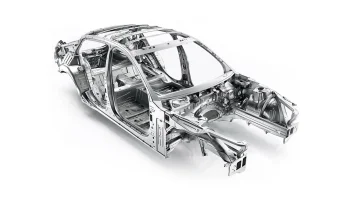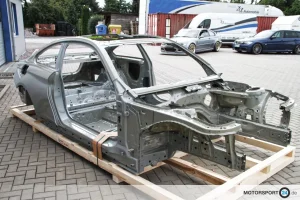MerlintheMad
10000 Posts Club!
I posted here, because I deliberately want to attract the comments/wisdom of those who know. I do not know. I only read and drive my car.
Here in the promo book, in the Nurburgring chapter (the best written, most engaging bit of text that Kia has produced for my eyes and heart), it says: "Indeed, huge thought goes into negotiating the white-knuckle Flugplatz section with its short uphill straight, quickly descending into two fast right-hand kinks. It steals your breath, widens your eyes and tightens your grip on the wheel. The Stinger's stiff chassis lets the electric-assist steering work its magic, though. Turning the thick, grippy wheel helps deliver the right on-center feel, the right weighting, and just the right amount of information about what the front wheels are doing."
This is the opening argument for why I say that the Stinger is a stiff car, i.e. necessarily a feature of fine communication with the front end, what the steering is doing and tells you it is doing, etc. This has been my experience, limited though it is thus far.
I am not going to drop any names here, or appeal to anyone on the forum. If you read this, you'll recognize instantly which "camp" you belong to, and probably where I got my information from.
I've been told very recently that the Stinger's chassis is very flexible compared to other cars, performance and non performance. And in a posted review, the writer has this to say: "A last concern: chassis stiffness. From the lack of precise feedback from the front end when completely loaded in a turn, to a disconcerting creaking over every raised entrance to a gas station that put a load on one corner, this Stinger might benefit from some bracing. It's a big, heavy, long-wheelbase car with a giant hole for the liftgate, to be fair — none of that helps with stiffness. Even with that caveat, there's more flex than you'd expect, and this undercuts its otherwise convincing aura of quality and competence." 2018 Kia Stinger GT Quick Spin Review | Running the diaper-to-racetrack gamut Which on the face of it is diametrically opposed to the Nurburgring assertion. How this guy gets "imprecise feedback from the front end" and the Nurburgring driver gets "just the right amount of information about what the front wheels are doing", is beyond explanation by me.
I've read on here that the Stinger has "good bones" for being a track car: and that Pobst very recently sang its praises at Laguna Seca, pretty much saying the same thing; that the car when driven past "75%" hunkers down and stops swaying, etc. This is countered by the same reviewer cited above, who says: "The takeaway from this week of extremes — child-rearing mundanity and track shenanigans — is that the Stinger GT is most successful in between. There's space for lots of luggage, the handling at around three-quarters of the car's limits is lovely ..." This is countered by one of our own car guys, with a lot of track experience, who has written this past week that the car really doesn't start to behave like a track car until it is pushed hard. So which is it?
"Track bones"? Or diaper bag carrier that happens to accelerate well?
Does the chassis flex and feedback steering response inadequately? Or is the Nurburgring description accurate? It can't be both, or can it? Do individual cars have better or less stellar "electronically controlled suspension/steering"? Is the reported mushiness or precision a matter of driver taste/talent? Is the reported "creaking" as the car goes over uneven entrances or negotiates steep driveways, etc., a function of a "flexible chassis", or is the noise generated by something else? Could the electronically controlled suspension/steering send back noises on some cars?
Is the reported noise from doors/sunroof at speed in any way related to the assertion that the chassis lacks stiffness?
And finally, I get to report my own observations, again. Elsewhere I've mentioned that the opportunity was offered, and instantly seized upon, to go fast. I took the car up to 155 MPH. In a straight line, but only horizontally. Vertically, the car was up and down with the undulations in the road: which at the speed limit and considerably above, were not noticeable; but over 140 MPH turned into humps and then at the top end, thumps. At the end of each "up" the car planted back down immediately, remaining smooth, firm and stable. The steering was impressively confidence-building, feeling completely controllable. A flexible chassis would not have allowed this, would it? The expected result of high speed would be a tendency toward instability and the steering would not remain the same at 150+ as it feels at c. 70. That's what my logic tells me, anyway.
Is there a way to resolve this dichotomy? I think that Albert Biermann made sure the Stinger's chassis is stiff. And others have an opposite opinion, or even certainty, that the flex is excessive, especially compared to other cars.
Here in the promo book, in the Nurburgring chapter (the best written, most engaging bit of text that Kia has produced for my eyes and heart), it says: "Indeed, huge thought goes into negotiating the white-knuckle Flugplatz section with its short uphill straight, quickly descending into two fast right-hand kinks. It steals your breath, widens your eyes and tightens your grip on the wheel. The Stinger's stiff chassis lets the electric-assist steering work its magic, though. Turning the thick, grippy wheel helps deliver the right on-center feel, the right weighting, and just the right amount of information about what the front wheels are doing."
This is the opening argument for why I say that the Stinger is a stiff car, i.e. necessarily a feature of fine communication with the front end, what the steering is doing and tells you it is doing, etc. This has been my experience, limited though it is thus far.
I am not going to drop any names here, or appeal to anyone on the forum. If you read this, you'll recognize instantly which "camp" you belong to, and probably where I got my information from.
I've been told very recently that the Stinger's chassis is very flexible compared to other cars, performance and non performance. And in a posted review, the writer has this to say: "A last concern: chassis stiffness. From the lack of precise feedback from the front end when completely loaded in a turn, to a disconcerting creaking over every raised entrance to a gas station that put a load on one corner, this Stinger might benefit from some bracing. It's a big, heavy, long-wheelbase car with a giant hole for the liftgate, to be fair — none of that helps with stiffness. Even with that caveat, there's more flex than you'd expect, and this undercuts its otherwise convincing aura of quality and competence." 2018 Kia Stinger GT Quick Spin Review | Running the diaper-to-racetrack gamut Which on the face of it is diametrically opposed to the Nurburgring assertion. How this guy gets "imprecise feedback from the front end" and the Nurburgring driver gets "just the right amount of information about what the front wheels are doing", is beyond explanation by me.
I've read on here that the Stinger has "good bones" for being a track car: and that Pobst very recently sang its praises at Laguna Seca, pretty much saying the same thing; that the car when driven past "75%" hunkers down and stops swaying, etc. This is countered by the same reviewer cited above, who says: "The takeaway from this week of extremes — child-rearing mundanity and track shenanigans — is that the Stinger GT is most successful in between. There's space for lots of luggage, the handling at around three-quarters of the car's limits is lovely ..." This is countered by one of our own car guys, with a lot of track experience, who has written this past week that the car really doesn't start to behave like a track car until it is pushed hard. So which is it?
"Track bones"? Or diaper bag carrier that happens to accelerate well?
Does the chassis flex and feedback steering response inadequately? Or is the Nurburgring description accurate? It can't be both, or can it? Do individual cars have better or less stellar "electronically controlled suspension/steering"? Is the reported mushiness or precision a matter of driver taste/talent? Is the reported "creaking" as the car goes over uneven entrances or negotiates steep driveways, etc., a function of a "flexible chassis", or is the noise generated by something else? Could the electronically controlled suspension/steering send back noises on some cars?
Is the reported noise from doors/sunroof at speed in any way related to the assertion that the chassis lacks stiffness?
And finally, I get to report my own observations, again. Elsewhere I've mentioned that the opportunity was offered, and instantly seized upon, to go fast. I took the car up to 155 MPH. In a straight line, but only horizontally. Vertically, the car was up and down with the undulations in the road: which at the speed limit and considerably above, were not noticeable; but over 140 MPH turned into humps and then at the top end, thumps. At the end of each "up" the car planted back down immediately, remaining smooth, firm and stable. The steering was impressively confidence-building, feeling completely controllable. A flexible chassis would not have allowed this, would it? The expected result of high speed would be a tendency toward instability and the steering would not remain the same at 150+ as it feels at c. 70. That's what my logic tells me, anyway.
Is there a way to resolve this dichotomy? I think that Albert Biermann made sure the Stinger's chassis is stiff. And others have an opposite opinion, or even certainty, that the flex is excessive, especially compared to other cars.






